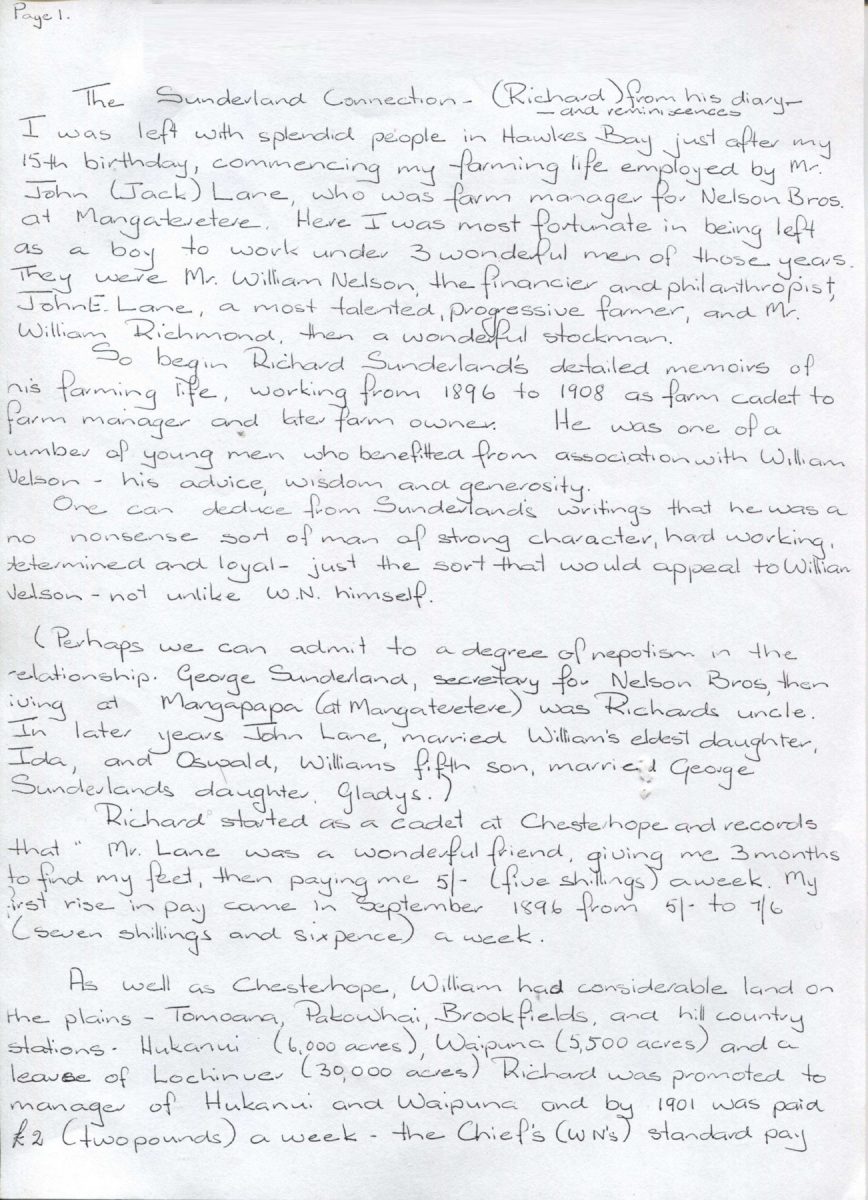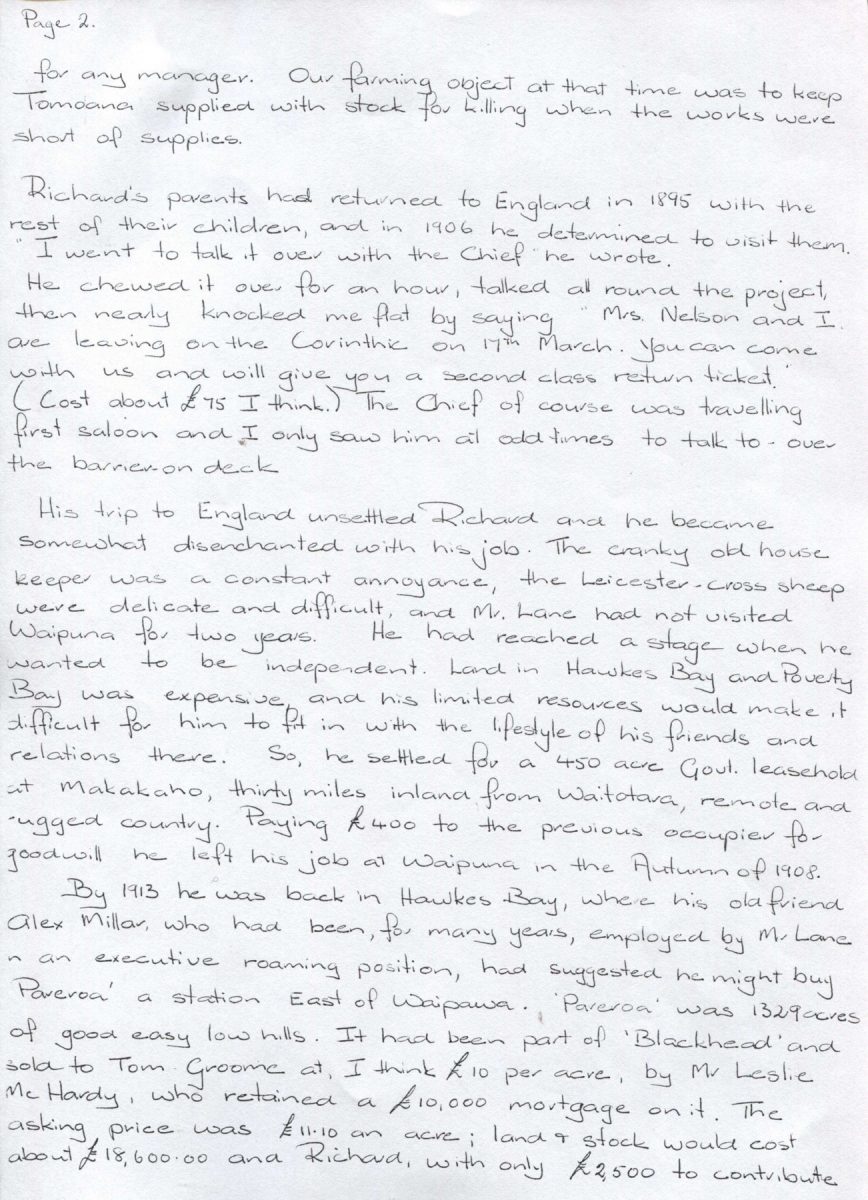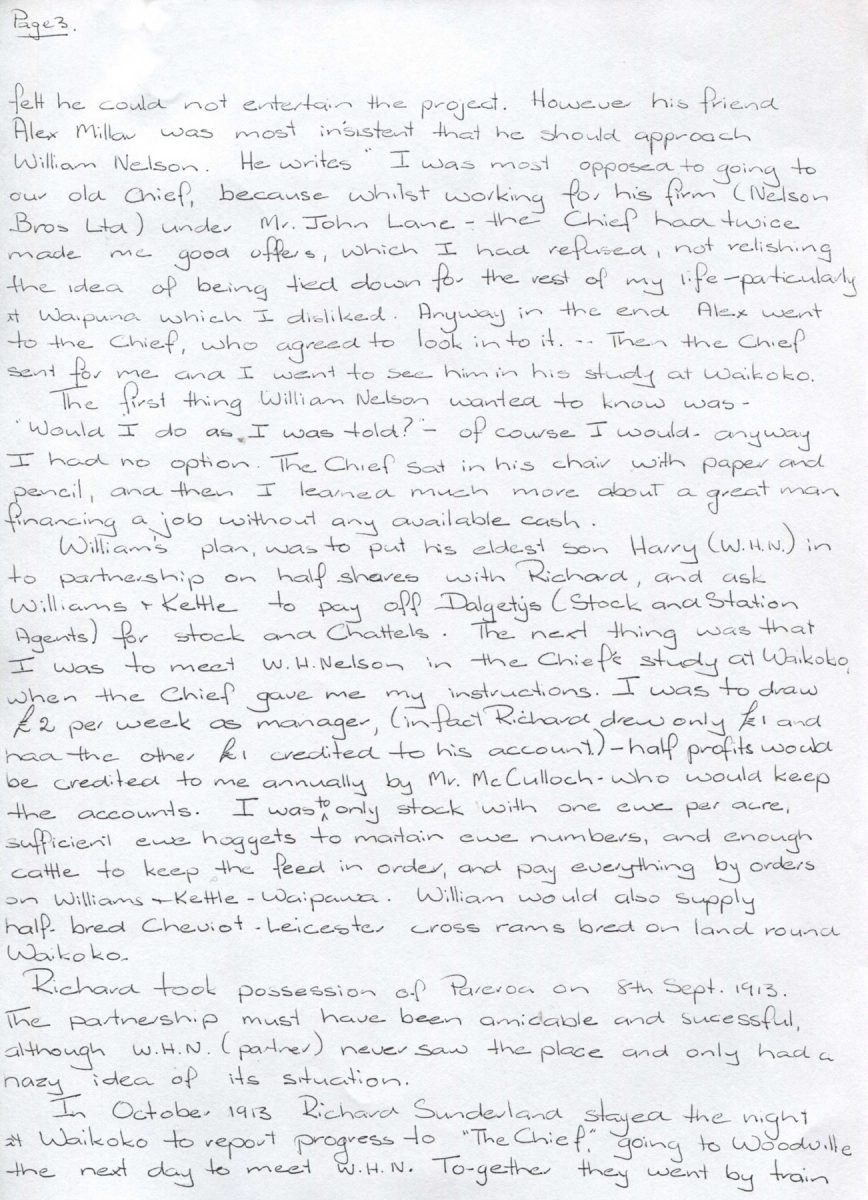Page 1
The Sunderland Connection – (Richard) from his diary – and reminiscences
I was left with splendid people in Hawkes Bay just after my 15th birthday, commencing my farming life employed by Mr. John (Jack) Lane, who was farm manager for Nelson Bros. at Mangateretere. Here I was most fortunate in being left as a boy to work under 3 wonderful men of those years. They were Mr. William Nelson, the financier and philanthropist, John E. Lane, a most talented, progressive farmer, and Mr. William Richmond, then a wonderful stockman.
So begin Richard Sunderland’s detailed memoirs of his farming life, working from 1896 to 1908 as farm cadet to farm manager and later farm owner. He was one of a number of young men who benefitted from association with William Nelson – his advice, wisdom and generosity.
One can deduce from Sunderland’s writings that he was a no nonsense sort of man of strong character, hard working, determined and loyal – just the sort that would appeal to William Nelson – not unlike W.N. himself.
(Perhaps we can admit to a degree of nepotism in the relationship. George Sunderland, secretary for Nelson Bros, then living at Mangapapa (at Mangateretere) was Richards uncle. In later years John Lane, married William’s eldest daughter, Ida, and Oswald, Williams fifth son, married George Sunderlands daughter, Gladys.)
Richard started as a cadet at Chesterhope and records that “Mr Lane was a wonderful friend, giving me 3 months to find my feet, then paying me 5/- (five shillings) a week. My first rise in pay came in September 1896 from 5/- to 7/6 (seven shillings and sixpence) a week.
As well as Chesterhope, William had considerable land on the plains – Tomoana, Pakowhai, Brookfields, and hill country stations – Hukanui (6,000 acres), Waipuna (5,500 acres) and a lease of Lochinver (30,000 acres) Richard was promoted to manager of Hukanui and Waipuna and by 1901 was paid £2 (two pounds) a week – the Chief’s (W N’s) standard pay















Do you know something about this record?
Please note we cannot verify the accuracy of any information posted by the community.